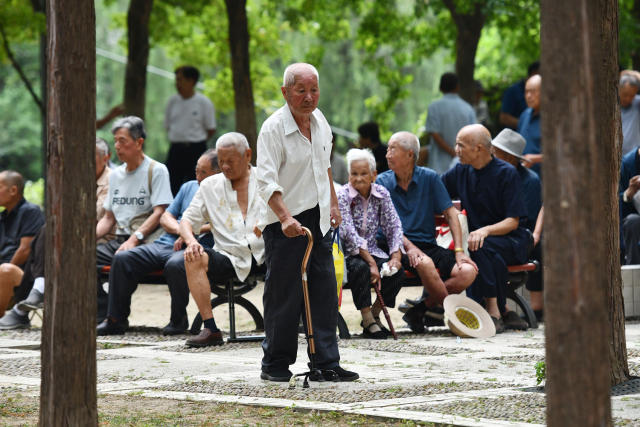Burdened by pensions and an increase in the number of elderly, China has raised the retirement age
For the first time since the 1950s, China has announced a major reform of its retirement age policy. In response to the country’s aging population and the increasing burden on its pension system, the National People's Congress of China has approved a proposal to raise the retirement age for both men and women. The move is seen as a necessary step to address the financial strain on China’s social security system while ensuring that the workforce can meet the demands of a rapidly changing economy.
The Need for Reform: China’s Aging Population
China’s population is aging at an unprecedented rate, posing a serious challenge to the country’s social security and pension systems. The country faces a demographic crisis where fewer young people are entering the workforce, while the number of retirees is growing rapidly. This shift is creating a pension burden, as there are fewer workers to support the increasing number of retirees. As a result, the government has taken steps to increase the retirement age to help alleviate the pressure on the pension system.
Key Changes in Retirement Age
Women in Blue-Collar Jobs
The retirement age for women working in blue-collar jobs will be increased from 50 to 55 years. These women often work in industries such as manufacturing, agriculture, and other physically demanding jobs. The gradual increase in retirement age is aimed at extending their time in the workforce while allowing them more time to accumulate retirement savings.
Women in White-Collar Jobs
For women working in white-collar jobs, the retirement age will be raised from 55 to 58 years. This change reflects the different nature of white-collar work, which typically involves less physical labor compared to blue-collar jobs. The extension of the retirement age will give these women more time to contribute to the social security system and improve their pension benefits.
Men’s Retirement Age
The retirement age for men will also see a significant increase, moving from 60 to 63 years. This change is in line with the broader effort to increase the retirement age for all workers in China. Men in both blue-collar and white-collar jobs will now be expected to work longer before becoming eligible for retirement benefits.
Implementation Timeline
The new retirement age regulations will be gradually implemented, starting on January 1, 2025. The reforms are designed to reach their full target over the course of the next 15 years. By 2040, the retirement age will have fully shifted to the new limits outlined by the government. This gradual transition will allow workers and employers to adjust to the changes and prepare for the new system.
Pension Reforms and Social Security Contributions
In addition to raising the retirement age, the Chinese government has introduced reforms to its pension system. Starting in 2030, employees will be required to contribute a portion of their salary to the social security system in order to receive a pension. From 2039 onwards, employees will need to contribute to the social security system for at least 20 years to be eligible for a pension upon retirement. These reforms are designed to ensure the sustainability of the pension system by increasing the financial contributions of current workers.
Global Comparisons and Challenges
China’s previous retirement age—one of the lowest in the world—has long been a subject of discussion. In comparison, many countries have retirement ages set between 62 and 67 years, reflecting a global trend toward raising the retirement age in response to increasing life expectancy and economic pressures. China's decision to increase the retirement age is a significant step in aligning with global norms, though it faces challenges as the country navigates its aging population and the financial strain on its social welfare system.
Conclusion
China’s decision to raise the retirement age is a necessary response to the country’s rapidly aging population and growing pension burden. With a planned gradual implementation, the new policies aim to balance the need for a sustainable pension system while providing workers with more time to prepare for retirement. As China faces these demographic and economic challenges, the reform represents a crucial step in securing the future of its social security system.







